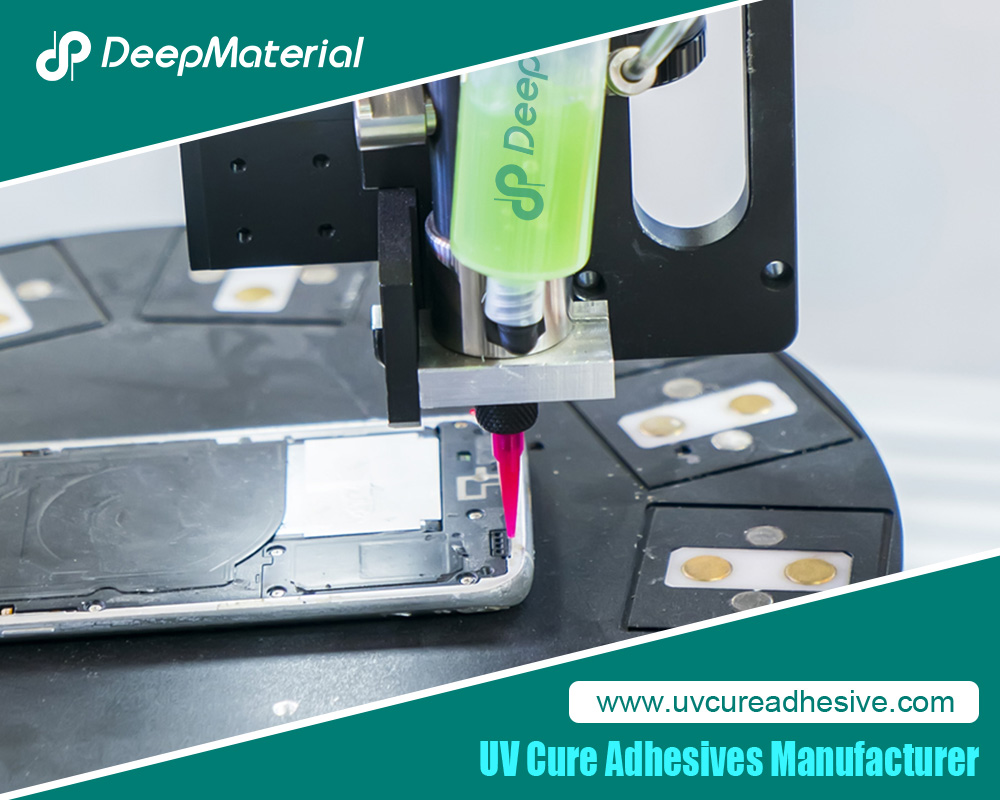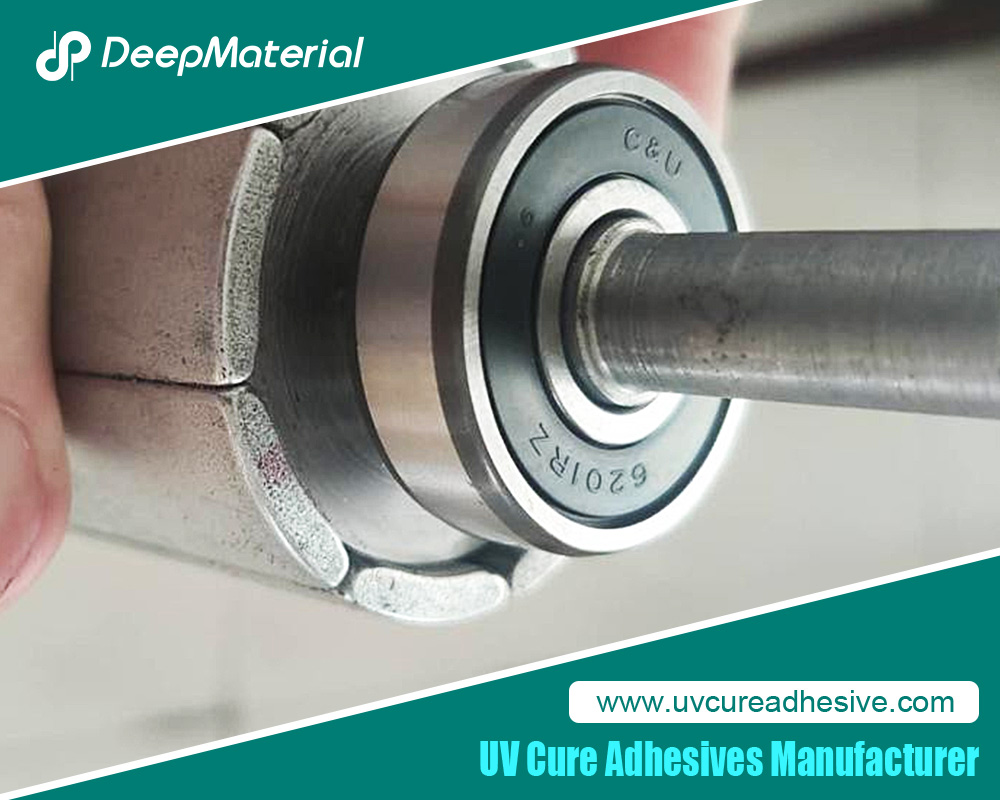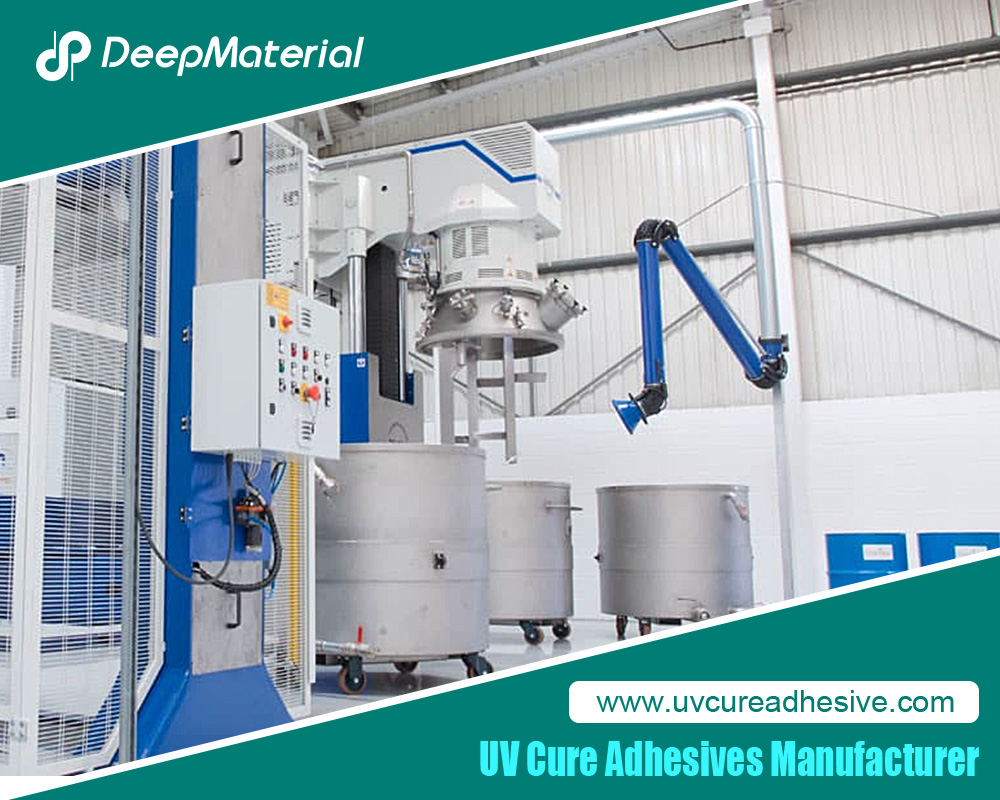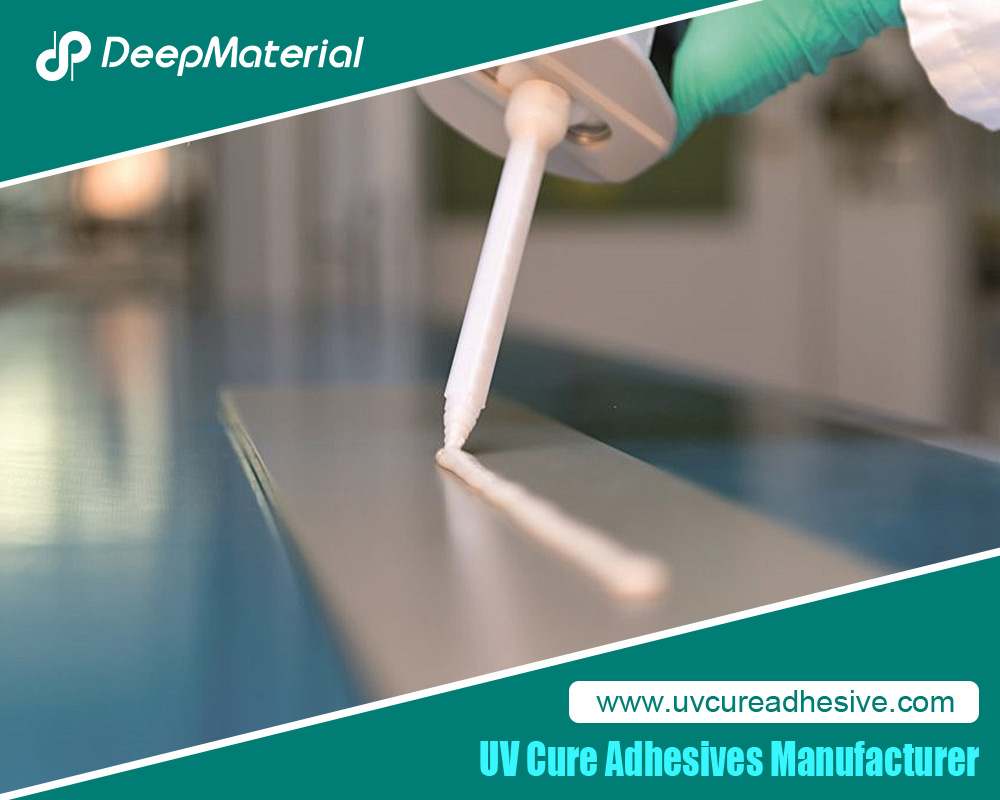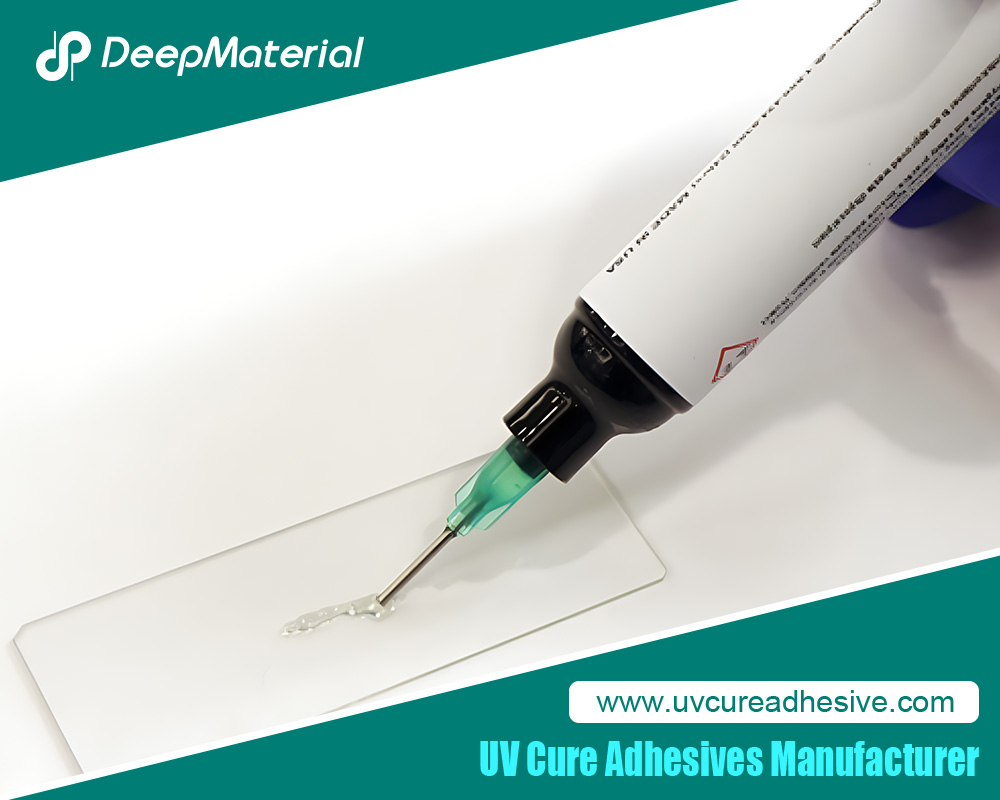Aging Mechanism and Modification Strategies of LED UV Glue under Long-term Ultraviolet Irradiation
LED UV glue, with its advantages of fast curing speed, high bonding strength, and environmental friendliness, has been widely used in fields such as optical device packaging, electronic assembly, and medical devices. However, in scenarios where it is exposed to ultraviolet environments for a long time, such as outdoor lighting, automobile headlights, and aerospace, the aging problem of the glue gradually becomes prominent. Long-term ultraviolet irradiation can lead to a decline in the performance of the glue, such as a decrease in bonding strength, attenuation of light transmittance, brittleness of the material, etc., seriously affecting the reliability and service life of the products. Therefore, studying the aging mechanism of LED UV glue and proposing effective modification methods are of great significance for expanding its application scope and improving product quality.
Aging Mechanisms of LED UV Glue
1. Photo-oxidative Degradation
Ultraviolet photons have relatively high energy. Chemical bonds such as carbon-carbon double bonds and carbon-hydrogen bonds in the resin matrix (such as acrylates, epoxy resins, etc.) of LED UV glue are prone to breakage to form free radicals after absorbing ultraviolet energy. These free radicals react with oxygen in the air to form peroxy radicals and hydroperoxides, further triggering a chain reaction and leading to the breakage of the polymer main chain. For example, in acrylate-based UV glue, the acrylate monomer units, under the action of ultraviolet rays, have their carbon-carbon double bonds broken to form free radicals, which react with oxygen to form carbonyl compounds, thus destroying the chemical structure of the glue and deteriorating its performance.
2. Destruction of the Cross-linked Structure
The cross-linked network formed after the curing of UV glue is the basis for its good physical and chemical properties. Long-term ultraviolet irradiation can cause the chemical bonds at the cross-linking points to break, destroying the cross-linked network structure. On the one hand, the free radical reaction caused by ultraviolet rays may lead to the breakage of the chemical bonds near the cross-linking points; on the other hand, the heat generated by ultraviolet irradiation will accelerate the thermal degradation of the cross-linked structure, reducing the hardness, strength, and other properties of the glue, making it gradually loose and brittle.
3. Failure of Additives
UV glue usually contains additives such as photoinitiators, stabilizers, and plasticizers to improve its performance. Photoinitiators play a role in initiating the polymerization reaction at the initial stage of ultraviolet irradiation. However, under long-term irradiation, some photoinitiators will undergo photobleaching or decomposition, and they can no longer initiate the reaction. What’s more, they may even produce harmful by-products, affecting the stability of the glue. After stabilizers (such as antioxidants and ultraviolet absorbers) are exhausted, they can no longer effectively resist the erosion of ultraviolet rays and oxygen, leading to an accelerated aging process of the glue.
4. Accumulation of Internal Stress
Ultraviolet irradiation may cause a temperature gradient inside the glue, leading to thermal stress. At the same time, photo-oxidative degradation and destruction of the cross-linked structure will cause changes in the volume of the glue, generating internal stress. The accumulation of these internal stresses will lead to the formation of micro-cracks inside the glue. Over time, the micro-cracks will expand, ultimately reducing the bonding performance and overall strength of the glue.
Modification Strategies for Extending the Service Life of LED UV Glue
1. Polymer Structure Design
1.1 Introduction of Stable Groups
In the design of the resin molecular structure, introduce stable groups with high stability, such as benzene rings and alicyclic structures. The chemical bonds of these groups have relatively high bond energy and are not easily broken by ultraviolet rays. For example, introducing an alicyclic structure into the acrylate resin can enhance the rigidity and stability of the molecular chain, reduce the damage of ultraviolet rays to the molecular chain, and improve the aging resistance of the glue. In addition, increasing the degree of saturation of the molecular chain and reducing the number of unsaturated bonds can also reduce the occurrence probability of photo-oxidation reactions.
1.2 Optimization of the Cross-linked Network
Adjust the type and dosage of the cross-linking agent to optimize the cross-linked network structure. Appropriately increasing the cross-linking density can enhance the ability of the glue to resist the damage of ultraviolet rays. However, an excessively high cross-linking density will make the glue brittle. Therefore, it is necessary to find an appropriate balance point. At the same time, using the interpenetrating polymer network (IPN) technology to interpenetrate two or more different polymer networks to form a synergistic effect can improve the comprehensive performance and aging resistance of the glue.
2. Additive Optimization
2.1 New Photoinitiators
Develop new photoinitiators with good light resistance and high stability. For example, replace traditional small-molecule photoinitiators with macromolecular photoinitiators. Due to their relatively large molecular size, macromolecular photoinitiators are not easy to migrate and volatilize, and they can be better retained in the polymer network after curing, reducing the phenomena of photobleaching and decomposition. In addition, a composite photoinitiator system (such as the combination of a free radical photoinitiator and a cationic photoinitiator) can play a synergistic role, improve the photoinitiation efficiency, and at the same time reduce the dosage of the photoinitiator, reducing the aging problems caused by the photoinitiator.
2.2 High-efficiency Stabilizers
Select high-efficiency antioxidants and ultraviolet absorbers. Antioxidants (such as hindered phenols and phosphites) can capture free radicals, interrupt the chain transfer of the photo-oxidation reaction, and prevent the degradation of the polymer main chain. Ultraviolet absorbers (such as benzophenones and benzotriazoles) can selectively absorb ultraviolet rays and convert them into harmless heat energy for release, reducing the direct effect of ultraviolet rays on the glue. By combining different types of antioxidants and ultraviolet absorbers, a synergistic effect can be produced, further improving the aging resistance of the glue. In addition, adding free radical scavengers, such as hindered amine light stabilizers (HALS), can effectively capture the free radicals generated by ultraviolet irradiation and inhibit the photo-oxidation reaction.
3. Nanocomposite Technology
Adding nanoparticles (such as titanium dioxide, silica, montmorillonite, etc.) to UV glue can significantly improve its aging resistance. Nano-titanium dioxide has excellent ultraviolet shielding ability. With its small particle size and large specific surface area, it can be uniformly dispersed in the glue, effectively absorbing and scattering ultraviolet rays, and reducing the effect of ultraviolet rays on the polymer matrix. Nano-silica can enhance the mechanical properties and thermal stability of the glue and improve its resistance to ultraviolet aging. By modifying the surface of the nanoparticles (such as treatment with a coupling agent), the dispersibility and compatibility of the nanoparticles in the glue can be improved, and the reinforcing and aging-resistant effects of the nanoparticles can be fully exerted.
4. Surface Protection Treatment
Coat a protective coating on the surface of the cured glue, such as a silicone coating or a fluorocarbon coating. These protective coatings have good weather resistance and ultraviolet shielding performance and can effectively block the direct irradiation of ultraviolet rays on the glue. At the same time, the protective coating can also play the roles of waterproofing and antifouling, reducing the erosion of external environmental factors on the glue, thus extending the service life of the glue. In addition, using physical vapor deposition (PVD), chemical vapor deposition (CVD) and other technologies to prepare a nanoscale protective film on the surface of the glue can also significantly improve the aging resistance of the glue.
5. Curing Process Optimization
Optimize the curing process parameters of UV glue, such as ultraviolet wavelength, light intensity, and irradiation time. A suitable curing process can make the glue cure fully and form a uniform and dense cross-linked network, improving the initial performance and stability of the glue. Research shows that using a stepwise curing process (such as low-intensity irradiation for pre-curing first and then high-intensity irradiation for complete curing) can reduce the internal stress generated by rapid curing and lower the aging risk of the glue caused by internal stress during subsequent use.
Conclusion
The aging of LED UV glue under long-term ultraviolet irradiation is the result of the combined action of multiple factors, including photo-oxidative degradation, destruction of the cross-linked structure, failure of additives, and accumulation of internal stress. Through modification strategies such as polymer structure design, additive optimization, nanocomposite technology, surface protection treatment, and curing process optimization, the aging resistance of LED UV glue can be effectively improved, and its service life can be extended. In practical applications, according to specific usage scenarios and requirements, multiple modification methods need to be comprehensively applied to meet the needs of different fields for high-performance and long-life UV glue. In the future, with the continuous development of materials science and nanotechnology, the aging resistance of LED UV glue is expected to be further improved, providing strong support for its wider application in more fields.
For more about aging mechanism and modification strategies of LED UV glue under long-term ultraviolet irradiation, you can pay a visit to DeepMaterial at https://www.uvcureadhesive.com/ for more info.

